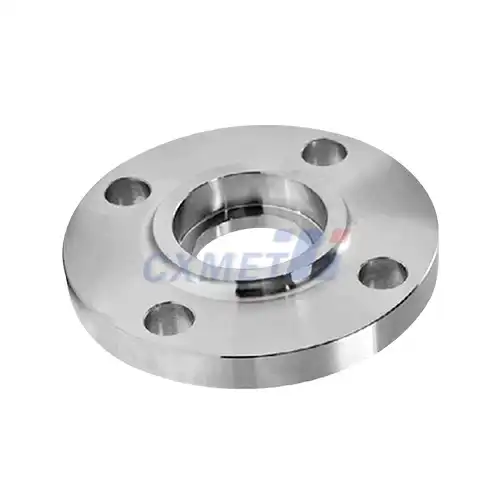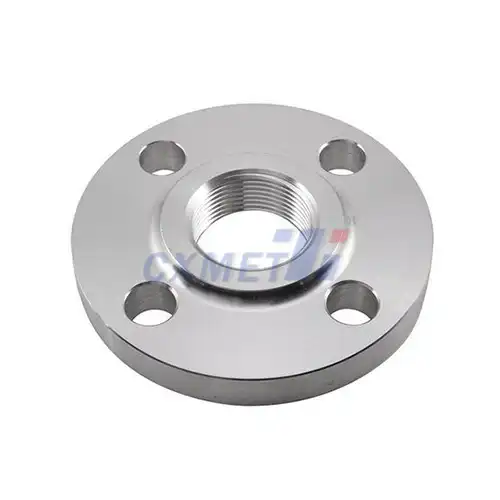- English
- French
- German
- Portuguese
- Spanish
- Russian
- Japanese
- Korean
- Arabic
- Greek
- German
- Turkish
- Italian
- Danish
- Romanian
- Indonesian
- Czech
- Afrikaans
- Swedish
- Polish
- Basque
- Catalan
- Esperanto
- Hindi
- Lao
- Albanian
- Amharic
- Armenian
- Azerbaijani
- Belarusian
- Bengali
- Bosnian
- Bulgarian
- Cebuano
- Chichewa
- Corsican
- Croatian
- Dutch
- Estonian
- Filipino
- Finnish
- Frisian
- Galician
- Georgian
- Gujarati
- Haitian
- Hausa
- Hawaiian
- Hebrew
- Hmong
- Hungarian
- Icelandic
- Igbo
- Javanese
- Kannada
- Kazakh
- Khmer
- Kurdish
- Kyrgyz
- Latin
- Latvian
- Lithuanian
- Luxembou..
- Macedonian
- Malagasy
- Malay
- Malayalam
- Maltese
- Maori
- Marathi
- Mongolian
- Burmese
- Nepali
- Norwegian
- Pashto
- Persian
- Punjabi
- Serbian
- Sesotho
- Sinhala
- Slovak
- Slovenian
- Somali
- Samoan
- Scots Gaelic
- Shona
- Sindhi
- Sundanese
- Swahili
- Tajik
- Tamil
- Telugu
- Thai
- Ukrainian
- Urdu
- Uzbek
- Vietnamese
- Welsh
- Xhosa
- Yiddish
- Yoruba
- Zulu
What are the Mechanical Properties of the Titanium Hex Bar?
2024-08-16 11:09:32
Titanium hex bars are high-performance materials widely used in various industries due to their exceptional mechanical properties. These hexagonal-shaped bars combine the inherent strengths of titanium with a unique geometric profile, making them ideal for applications requiring both strength and precision. Titanium hex bars exhibit an impressive balance of low density, high strength-to-weight ratio, and excellent corrosion resistance, making them a preferred choice in aerospace, automotive, marine, and medical industries. Understanding the mechanical properties of titanium hex bars is crucial for engineers and designers to maximize their potential in diverse applications.
How does the strength-to-weight ratio of Titanium Hex Bars compare to other metals?
The strength-to-weight ratio is a crucial factor in material selection, especially in industries where weight reduction is paramount. Titanium hex bars excel in this aspect, offering an exceptional balance between strength and lightweight properties. When compared to other commonly used metals, titanium hex bars demonstrate superior performance in terms of specific strength.
Titanium has a density of approximately 4.5 g/cm³, which is about 60% that of steel (7.85 g/cm³) and 50% higher than aluminum (2.7 g/cm³). Despite its lower density, titanium exhibits comparable or even superior strength characteristics to many steels. The yield strength of titanium alloys used in hex bars can range from 170 MPa for commercially pure titanium to over 1000 MPa for high-strength alloys like Ti-6Al-4V.
To put this into perspective, let's consider the specific strength, which is the strength-to-weight ratio. Titanium alloys can have specific strengths ranging from 250-1000 kN·m/kg, significantly outperforming many steels (100-400 kN·m/kg) and aluminum alloys (120-220 kN·m/kg). This exceptional strength-to-weight ratio makes titanium hex bars an ideal choice for applications where weight reduction is critical without compromising structural integrity.
In aerospace applications, for instance, the use of titanium hex bars can lead to substantial weight savings, improving fuel efficiency and payload capacity. The automotive industry also benefits from this property, as lighter components contribute to improved vehicle performance and fuel economy. Moreover, in marine environments, the combination of high strength and low weight makes titanium hex bars excellent for constructing components that can withstand harsh conditions while minimizing the overall weight of structures.
It's worth noting that the specific strength of titanium hex bars can be further enhanced through various heat treatment processes and alloying techniques. This allows for customization of the material properties to suit specific application requirements, providing engineers with a versatile material option that can be tailored to meet diverse mechanical demands.
What is the corrosion resistance of Titanium Hex Bars in different environments?
Corrosion resistance is a standout feature of titanium hex bars, setting them apart from many other metallic materials. This property is attributed to the formation of a stable, continuous, highly adherent, and protective oxide film on titanium's surface. This natural passive layer, primarily composed of titanium dioxide (TiO2), forms spontaneously when titanium is exposed to oxygen, providing exceptional protection against various corrosive environments.
In marine environments, titanium hex bars exhibit remarkable resistance to saltwater corrosion. Unlike many steels and even some stainless steel grades, titanium does not suffer from pitting or crevice corrosion in seawater. This makes it an excellent choice for offshore oil and gas industries, marine engineering, and shipbuilding applications. Titanium's corrosion rate in seawater is virtually negligible, often less than 0.1 mm per year, ensuring long-term reliability and reduced maintenance costs.
When exposed to acidic environments, titanium hex bars continue to demonstrate impressive corrosion resistance. They perform exceptionally well in the presence of oxidizing acids like nitric acid and can withstand many organic acids. However, it's important to note that titanium can be susceptible to attack by reducing acids such as hydrochloric or sulfuric acid at elevated temperatures. In such cases, alloying with elements like palladium or molybdenum can further enhance the corrosion resistance.
In industrial settings, titanium hex bars prove their worth in chemical processing plants, where they can handle a wide range of aggressive chemicals. They are resistant to chlorine, chlorine dioxide, and hypochlorite solutions, making them suitable for use in pulp and paper industries, water treatment facilities, and chlor-alkali plants.
The biocompatibility of titanium, coupled with its corrosion resistance, makes titanium hex bars an excellent choice for medical implants and surgical instruments. The material's resistance to bodily fluids and its ability to integrate with human tissue without adverse reactions contribute to its widespread use in orthopedic and dental applications.
It's worth noting that while titanium hex bars offer superior corrosion resistance in many environments, they may experience accelerated corrosion in the presence of fluoride ions, particularly in acidic conditions. Additionally, at very high temperatures (above 535°C in air), titanium can react with oxygen, leading to the formation of a brittle oxide layer. These limitations, however, are specific to extreme conditions and do not significantly impact the material's performance in most applications.
How does the fatigue strength of Titanium Hex Bars affect their long-term performance?
Fatigue strength is a critical mechanical property that significantly influences the long-term performance and reliability of materials subjected to cyclic loading. Titanium hex bars exhibit excellent fatigue characteristics, contributing to their widespread use in applications requiring high endurance under repeated stress.
The fatigue strength of titanium hex bars is generally superior to that of many other metals, including steel and aluminum alloys. For instance, the fatigue limit (the stress below which the material can theoretically endure an infinite number of cycles without failure) for titanium alloys can be as high as 50-60% of their ultimate tensile strength. In comparison, many steels have fatigue limits around 35-40% of their ultimate tensile strength, while aluminum alloys typically do not exhibit a true fatigue limit.
This high fatigue strength translates to several advantages in long-term performance:
1. Extended Component Life: The superior fatigue resistance of titanium hex bars allows components to withstand a higher number of stress cycles before failure. This leads to increased durability and longer service life, particularly in applications involving repeated loading, such as aerospace components, automotive parts, and industrial machinery.
2. Improved Reliability: The high fatigue strength reduces the likelihood of unexpected failures due to cyclic loading, enhancing the overall reliability of systems and structures incorporating titanium hex bars.
3. Weight Optimization: Due to their high fatigue strength-to-weight ratio, titanium hex bars can be used to design lighter components without compromising long-term performance. This is particularly beneficial in weight-critical applications like aircraft and high-performance vehicles.
4. Corrosion Fatigue Resistance: The combination of high fatigue strength and excellent corrosion resistance makes titanium hex bars particularly suitable for applications in corrosive environments where cyclic loading is present, such as offshore structures and marine propulsion systems.
5. High-Temperature Performance: Many titanium alloys maintain good fatigue properties at elevated temperatures, making them suitable for high-temperature applications where other materials might experience accelerated fatigue degradation.
It's important to note that the fatigue performance of titanium hex bars can be influenced by various factors, including surface condition, heat treatment, and the presence of stress concentrations. Proper design considerations and manufacturing processes are crucial to fully capitalize on the material's inherent fatigue resistance.
Moreover, the fatigue behavior of titanium can be sensitive to the presence of notches or other stress concentrators. Designers must take this into account when using titanium hex bars in critical applications, employing appropriate stress analysis and fatigue life prediction models to ensure optimal performance.
In conclusion, the mechanical properties of titanium hex bars, including their exceptional strength-to-weight ratio, superior corrosion resistance, and excellent fatigue strength, make them a versatile and high-performance material choice for a wide range of applications. Their ability to combine lightweight characteristics with high strength and durability positions them as a preferred option in industries where performance, reliability, and efficiency are paramount. As material science continues to advance, further improvements in the properties and processing of titanium hex bars are likely to expand their applications and enhance their already impressive mechanical capabilities.
At SHAANXI CXMET TECHNOLOGY CO., LTD, we take pride in our extensive product range, which caters to diverse customer needs. Our company is equipped with outstanding production and processing capabilities, ensuring the high quality and precision of our products. We are committed to innovation and continuously strive to develop new products, keeping us at the forefront of our industry. With leading technological development capabilities, we are able to adapt and evolve in a rapidly changing market. Furthermore, we offer customized solutions to meet the specific requirements of our clients. If you are interested in our products or wish to learn more about the intricate details of our offerings, please do not hesitate to contact us at sales@cxmet.com. Our team is always ready to assist you.
References:
1. Leyens, C., & Peters, M. (Eds.). (2003). Titanium and titanium alloys: fundamentals and applications. John Wiley & Sons.
2. Lutjering, G., & Williams, J. C. (2007). Titanium (engineering materials and processes). Springer.
3. Boyer, R., Welsch, G., & Collings, E. W. (Eds.). (1994). Materials properties handbook: titanium alloys. ASM international.
4. Peters, M., Kumpfert, J., Ward, C. H., & Leyens, C. (2003). Titanium alloys for aerospace applications. Advanced engineering materials, 5(6), 419-427.
5. Rack, H. J., & Qazi, J. I. (2006). Titanium alloys for biomedical applications. Materials Science and Engineering: C, 26(8), 1269-1277.
6. Donachie, M. J. (2000). Titanium: a technical guide. ASM international.
7. Schutz, R. W., & Watkins, H. B. (1998). Recent developments in titanium alloy application in the energy industry. Materials Science and Engineering: A, 243(1-2), 305-315.
8. Elias, C. N., Lima, J. H. C., Valiev, R., & Meyers, M. A. (2008). Biomedical applications of titanium and its alloys. Jom, 60(3), 46-49.
9. Niinomi, M. (2008). Mechanical biocompatibilities of titanium alloys for biomedical applications. Journal of the mechanical behavior of biomedical materials, 1(1), 30-42.
10. Banerjee, D., & Williams, J. C. (2013). Perspectives on titanium science and technology. Acta Materialia, 61(3), 844-879.
 titanium wire 1.webp)



.webp)